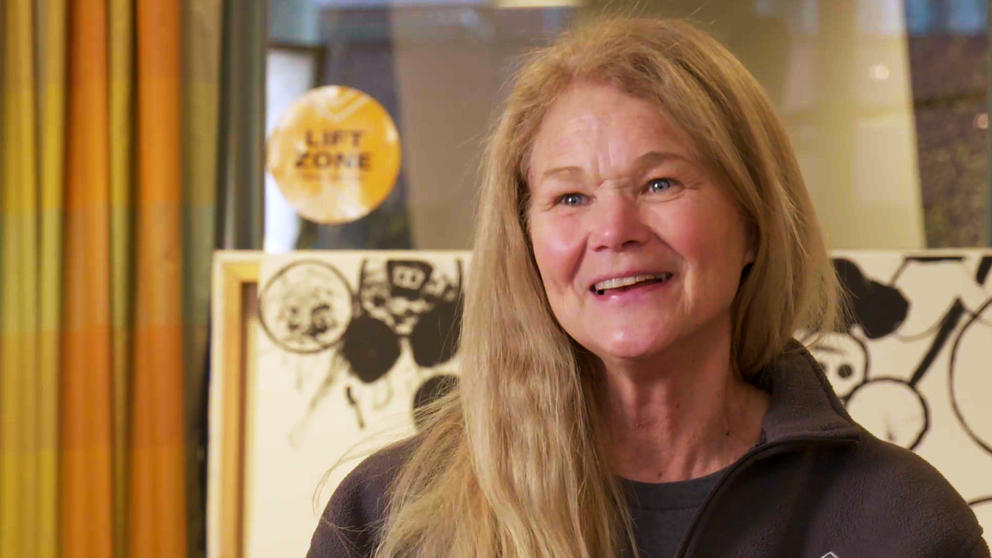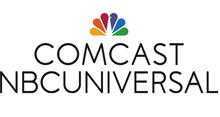Sponsored Content
Families at Mary’s Place find housing, jobs and community with tech support from Comcast

“We want to make sure that our families are able to get the help and the support they need — that only comes through adequate technology,” says Marty Hartman, executive director at Mary’s Place.
Through a longstanding partnership, Seattle-based shelter and community resource organization Mary’s Place and Comcast provide internet access and digital literacy training to families navigating homelessness. During the COVID-19 pandemic, this service has never been more important.
Mary’s Place’s mission is to ensure no child sleeps outside. The nonprofit provides shelter and other resources for women, children and families experiencing homelessness and/or housing insecurity in the greater Seattle area.
When the pandemic began, their work became more complicated and essential.
At that time, Carla Carrell, Senior Director of External Affairs for Comcast, said the company recognized that not everyone had internet access, so they started their Lift Zone program. In Washington, the service provides powerful free Gigabit WiFi at over 90 community centers across the state, meaning “anybody that you need to provide that connectivity to at your facility can have that access,” Carrell said.
The robust relationship, focused on digital literacy, connectivity, and program support, emerged from a Comcast employee volunteer team building initiative. The Comcast’s Women’s Network Employee Resource Group now continues to support Mary’s Place, supporting volunteership for the nonprofit.
Distance learning during the pandemic
When the pandemic began, families everywhere had to adapt to significant changes in school, work and more. Marty Hartman, Executive Director of Mary’s Place said Mary’s Place had to adapt, too — to accommodate a much bigger family.
Like any family navigating the early days of the pandemic, Mary’s Place had to pivot to help youngsters with distance learning. “We became not only the school teachers, the lunch ladies, the childcare worker, the recess duty,” Hartman said. “That all happened inside this building [The Regrade], and all of our sites,” which meant assisting children in online school.
To make it work, Mary’s Place had to scale up its technology — and quickly. Comcast came in to boost their bandwidth to make sure all 200 kids the program serves could get online — and stay. Mary’s Place’s partnership with Comcast was critical to this transition. “I would say it was the saving grace,” Hartman said.
Internet access is one way to do that. “Having an internet connection right now is more important than it's ever been before,” Carrell said.
Through two programs — the Lift Zone WiFi service, and the Internet Essentials program — Mary’s Place guests have the resources to maintain their education, keep track of housing, build job skills, and stay connected with friends and family.
Building job skills
Comcast’s Lift Zone program provides Mary’s Place with consistent internet access at all the organization’s facilities, said Dominique Alex, Chief Program Officer, Mary’s Place. The continuous access is good for students, and for jobseekers, too. “It's about sustainability and having the things you need holistically to be able to maintain that next step in your life,” Alex said. “So that people don't have to experience homelessness, again.”
In addition to the Lift Zone program, Comcast’s Internet Essentials program offers basic computer classes with volunteer instructors who help participants develop digital literacy skills, Alex said. The Lift Zone program is an extension of IE.
The program is celebrating 11 years in service as part of Comcast’s long term digital equity commitment, Carrell said. The program is designed to address the primary barriers to accessing the internet — digital literacy and the cost of equipment and service. At $9.95 a month, Internet Essentials is affordable, and comes with a variety of digital literacy skill building content and heavy subsidies to offset the cost of purchasing computer equipment. The program supports seven different languages and can connect guests with assistance in 240 more.
Mary’s Place also helps guests build key workforce skills through an internship program. Guests can receive training in the organization’s commercial kitchen and apply for a food handler’s permit online, Alex said.
“Internet Essentials is critical as folks are transitioning into their own home out of Mary's Place,” Carrell said. “[The program] is really the first broadband or internet connection that many people will ever have. And also, it's a really important piece of that, getting people across the digital divide.”
Finding and keeping a place to live
During the pandemic, volunteering went online, along with learning and work. In the digital space, Mary’s Place volunteers continued to assist guests with resume-building and job-hunting. “That meant they didn't have to give up on their housing goals,” Hartman said.
Beyond getting families housed and keeping kids connected to school and adults connected to job resources, Hartman said technology was crucial to preventing families from becoming homeless in the first place. “One of the best pieces about being connected to technology was families were able to apply for prevention assistance,” Hartman said. “And that was critical to get the rental assistance to stay in your housing.”
Hartman said Mary’s Place outreach workers could connect families in the field with internet access to apply for rental assistance, respond to emails, and prevent the trauma of becoming homeless.
Staying connected
While the partnership between Comcast and Mary’s Place has been crucial in allowing guests to build skills and pursue professional opportunities, it also facilitates something equally important, but perhaps less obvious: their ties to family and friends.
Brandon Morris is a guest at Mary’s Place who uses the internet services the organization provides through Comcast. The services allow him to connect with his mom and children, who live in different states. “It’s easy, using [the program] to call my son, my daughter,” Morris said.
Morris said the internet skills classes have also helped him refresh his internet skills and technical knowledge. “I knew some of it, a little bit, but that [class] freshens everything up for me, [on] how to use it,” Morris said.
By making internet access available, the Lift Zone program facilitates skill-building of the kind Morris described. Hartman said providing internet access for all was crucial for equity: “We want to make sure that our families are able to get the resources, the help and the support they need — that only comes through adequate technology,” Hartman said.

